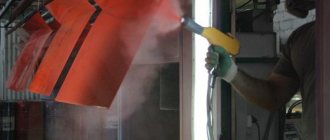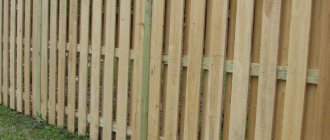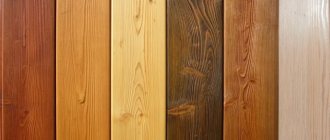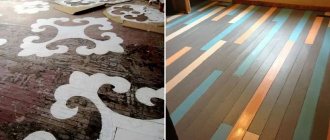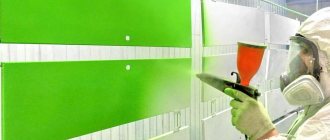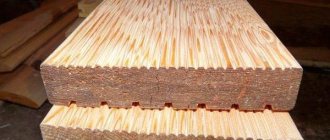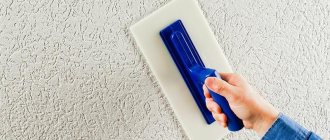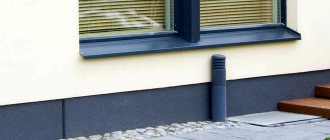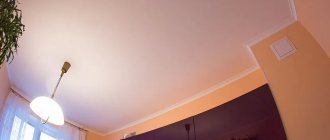Painting is a rather complex process that requires not only a lot of time and corresponding financial expenses, but also attentiveness, as well as the ability to perform monotonous and monotonous work for a long time. Many domestic citizens are interested in the question of how to paint a wooden fence installed at their own dacha. It should be noted that the features of this process directly depend on the type of fencing. Let's look at the painting process using the example of one of the most popular types of wooden fencing structures - picket fence.
Why is it necessary to paint the picket fence?
The picket fence itself is a rather weak structure in terms of structural strength. This is due, as a rule, to the extremely small size of the fence, as well as the use of relatively thin materials. By and large, a picket fence is an exclusively decorative fence, since it in no way can prevent illegal entry into the site.
The picket fence is purely a decorative fence, since it cannot in any way prevent illegal entry into the site.
It is the use as an object of decoration in landscape design that is one of the reasons requiring painting. Also, do not forget that wood is extremely susceptible to negative environmental influences, namely:
- increased humidity levels;
- sudden changes in temperature;
- long-term exposure to ultraviolet rays.
Under the influence of these factors, wood can crack, lose its attractive appearance, darken and even rot. In addition, it may be attacked by pests such as termites or various bacteria.
Current technologies for the production of paints and varnishes make it possible to create very high-quality paints that can ensure the safety of wood and also last for the longest possible period of time.
A layer of paint allows you to qualitatively protect against atmospheric and temperature manifestations, pests and microorganisms.
Current technologies for the production of paints and varnishes make it possible to create very high-quality paints that can ensure the safety of wood and also last for the longest possible period of time. Thanks to them, such a sacred dream of many dacha owners as a presentable and attractive fence made of white pickets will become a reality.
Selection of paints and varnishes
In the modern specialized market of paint and varnish products, there is an impressive selection, which is why it will be very difficult for a person who has little knowledge of this topic to choose the right option. You also need to remember that using the wrong paints or improper painting will cause no less damage to a wooden fence than the above environmental factors. Therefore, the choice of paint and varnish materials must be taken with full responsibility.
Since the picket fence, as a rule, will be in plain sight, for example, decorating a recreation area on the territory, framing a house or advantageously complementing the original flowering flower beds, the paints used must necessarily create not only a protective, but also a decorative coating.
First of all, special impregnations are chosen that protect the wood from the penetration of moisture, insects, mold, mildew and other misfortunes. There are both store-bought impregnations and homemade ones. It will, of course, be cheaper to produce such a substance yourself, but their performance qualities will not always meet even the minimum requirements. Accordingly, saving in this case is not recommended. It is advisable to give preference to antiseptic drugs produced by well-known brands, for example, Tikkurila, Pinotex and others.
In addition to impregnations and paint, you must also choose a primer. This is a special product that creates a thin layer on the surface of the wood, which simultaneously creates additional protection for the structure of the wood and significantly increases its adhesion to paints. Thanks to the primer, the surface will be well leveled, and the paint will lie on it as smoothly and firmly as possible.
First of all, special impregnations are chosen that protect the wood from the penetration of moisture, insects, mold, mildew and other misfortunes.
In addition to impregnations and paint, you must also choose a primer.
Modern paint manufacturers delight consumers with an impressive range of this type of coloring compositions:
Oily
The advantages of classic oil paints are obvious - they have good protective functions, as well as an affordable price in many respects. Unfortunately, this is where the advantages of such products end. However, there are a number of shortcomings, so when choosing what to cover a wooden fence with, oil paints should be the last thing you pay attention to.
The advantages of classic oil paints are obvious - they have good protective functions, as well as an affordable price in many respects.
Flaws:
- inability to penetrate deep into the wood structure, due to which the paint layer will in any case be superficial;
- short service life - regardless of the thickness of the layer, it will begin to peel and crack in two to three years, and maybe earlier if climatic conditions are favorable for this;
- instability to environmental influences. Oil paint is extremely poorly resistant to moisture and direct sunlight. Under the sun, such a coloring solution will quickly lose its attractive appearance, fade and crack. In this case, a certain paradox is also noted - despite the fact that the sun has a destructive effect on oil compositions, it is best to apply them in sunny weather, as this contributes to their faster drying;
- long drying. They take an indecently long time to dry, as for modern realities, time - at least a day. In many cases this is a very significant drawback, causing many inconveniences.
Fence painting ideas
The boards can be decorated to look like pencils and painted in different colors, and the top parts can be depicted as pointed leads. Using templates, you can recreate entire fairy-tale scenes on the fence, or you can simply draw human silhouettes. After the creative process is completed, you should definitely protect the image with varnish.
The wooden structure can be varied with additional elements. For example, cut logs and decorate them with bright flowers. A fence that is simply painted with varnish can be supplemented with green space. In other words, in such a creative matter as painting a wooden fence, the flight of imagination is not limited, and everything depends only on the creative thinking of the person who will lead the process.
Ideas for painting a wooden fence
Alkyd
A better quality option than oil paints. Such compositions are also characterized by an affordable price for many consumer categories, and they are much more durable. If you paint the picket fence with bitumen paint, you can forget about the need for repainting for three to four years. However, alkyd solutions are, by and large, intended for application in areas in contact with the ground. This could be, for example, the foundation, or simply the lower part of the fence.
Treating a wooden fence before painting
Constant contact of fence posts and fences with the ground contributes to the rotting and decomposition of wood. In order for the fence to last longer and not collapse due to rotten bases and the damp bottom of the picket fence, before painting it, the entire fence must be treated with special compounds.
The most famous method is to impregnate the pillars with machine oil. It is applied in several layers.
The second most popular method is heat treatment. The bottom of the timber, after preliminary cleaning, is burned with fire (a fire or a burner is used). The treated part is poured with molten tar or bitumen.
When working with the above-ground part of the fence, for this purpose there are synthetic mixtures that have antifungal, fire-resistant properties, protecting the surface from moisture and rotting.
The support post for the fence must be installed upside down (butt is the lower part of the tree). This is done so that the pile absorbs less moisture. To make it easier for the support to enter the ground, its top is sharpened to resemble a pencil. They are painted in 2-3 layers.
Deck
Very high quality compounds used for finishing work on ships. They have incredibly high resistance to negative environmental influences - moisture, ultraviolet rays, sudden temperature changes, severe frosts, or vice versa - heat, hail, wind, etc. It is virtually impossible to damage the protective layer of deck varnish or paint unless you try to do it on purpose.
They have incredibly high resistance to negative environmental influences - moisture, ultraviolet rays, sudden temperature changes, severe frosts, or vice versa - heat, hail, wind, etc.
The only drawback of these solutions is their high cost, which is not at all surprising given their quality. Therefore, it is recommended to use the product only when painting small areas. Considering that the picket fence is precisely that "minor area", buying several cans of deck paint can be quite justified.
Dyes based on several components
When you do work with your own hands, you want the result to be simply perfect. Therefore, novice craftsmen purchase expensive yacht varnishes or paints, consisting of several components that provide reliable protection and good appearance.
- They are quite reliable and resistant to both temperature changes and any weather conditions.
- They have a good and dense outer layer that can protect even from slight physical impact.
- However, their service life, as the instructions say, is only 3-4 years. After this, minor repairs may be required. At the same time, it is worth considering the exorbitant price of such material and think about whether it is worth using it in a country house or in a private home, since it is almost always very toxic.
- It is advisable to apply such paints to high-quality permanent fences, and not to the simplest and cheapest ones.
Advice! Having decided to use such a dye, you need to study the instructions for it in detail. It may contain information for specific applications that differ from conventional materials.
Expensive multi-component materials look very good during their warranty period
Tips for choosing paint for picket fences
It is strongly recommended to choose impregnation, primer and paint from the same manufacturer. Despite the general principle of operation of these coloring solutions, each company has its own technology for their production, and therefore different types can combine quite poorly with each other.
Be sure to read the instructions for use of the product, which, as a rule, are applied directly to the jar. You need to pay attention to consumption, acceptable application methods, drying time and other technical parameters, and compare them with existing requirements.
Be sure to read the instructions for use of the product, which, as a rule, are applied directly to the jar.
It would be a good idea to visit the manufacturer’s website, because the most complete information can only be obtained there. Don’t save money - buy paint with a reserve, because even with the most accurate calculation of the amount of material required, as a rule, it is not enough.
It is not necessary to paint the picket fence one color. You can combine them by painting the posts or crossbars in one shade, and the pickets in another. You can even mix different compositions, getting completely original color solutions. It will look especially stylish in combination with beautiful garden paths leading to the fence.
It is not necessary to paint the picket fence one color.
Two types of mixtures are created specifically for coloring wood - glazing and covering. It is imperative to clarify whether the purchased product belongs to these two types. The difference between them is that glazing preserves the natural structure of the wood and even its shade, while covering creates a very dense surface layer that hides the real color of the material.
Preparing the picket fence surface for painting
Before starting any painting work, the surface to be painted undergoes thorough preparation. In the case of a fence, it is as follows:
- removing the old layer of paint;
- removal of contaminants ingrained into the structure;
- sealing any structural defects, such as cracks, grooves, bumps, etc., for which wood putty is used;
- grinding and polishing;
- surface leveling;
- if necessary, replace pickets that cannot be used due to significant mechanical damage.
Removing the old paint layer
Removing contaminants ingrained into the structure
Repairing any structural defects such as cracks, recesses, bumps, etc.
Sanding and polishing
Leveling the surface
Replacement of pickets that cannot be used due to significant mechanical damage.
High-quality preparation is very important. Not only the quality of the coating, but also its protective and decorative functions directly depends on it.
It is recommended to choose warm and sunny weather for the dyeing process. This should be done even in cases where coloring compounds are used, the instructions for which indicate the possibility of use in damp and cold weather.
Preparing for painting
Before you begin the painting process, the wooden fence must be carefully prepared. This will help the paint stay on the picket fence for a long time. Preparation includes such moments.
- The surface of the fence is cleaned of various contaminants and dusty mixtures with a soft brush or washed with water.
- The wood is cleaned with fine sandpaper to remove nicks and knots to level the surface. The holes are filled with putty.
- Cracked old paint is carefully removed from the wooden fence with a wire brush. For cleaning, you can use the hot air of a hair dryer. After this, you need to sand the surface.
If the paint mixture requires preparation, then you need to stir it first and let it sit for a while.
Painting process
In order for the result to meet all expectations, it is necessary to strictly follow the established rules and recommendations, as well as the procedure for performing the work:
- First of all, impregnation is applied. One layer is enough, but you must ensure that the solution gets into all the microcracks and pores, closing them. Antiseptics dry very quickly, and after a short period of time it will be possible to begin the second stage.
- Before you start solving the question of how to paint a wooden picket fence, you need to prepare the base for the paint and varnish material. This is a task for the primer. It is recommended to use an alkyd-acrylic primer. As with impregnation, one coat is sufficient. But it is very important to let it dry completely. It is strictly not recommended to apply primers to surfaces that are not leveled and have obvious signs of contamination.
- The next step is applying the first layer of paint. It is advisable to paint the picket fence with a natural hair brush. This tool will not create stripes on the wood. If you have a roller, you can use that too. You can also resort to using a spray gun, but competent work with it requires the appropriate knowledge and skills.
- After the first layer has dried, a thorough inspection is carried out for various defects. They need to be removed, cleaned and painted.
- Applying the second, final layer of the color mixture. The same tools are used as when painting the first layer.
- A high-quality final inspection is carried out. Detected gaps, smudges, smudging and other defects must be eliminated immediately, before the surface is dry.
It is advisable to paint a picket fence on both sides, even on the reverse side, which is traditionally not visible either from the street or inside the site, depending on the purpose of the fence. This will help reliably protect it from the destructive effects of moisture.
How to paint a wooden fence so that it lasts 10 years or more
Bagretsov Alexey Vladimirovich project manager Moscow
A fence made of wooden picket fence is an environmentally friendly design, aesthetically attractive, but without proper processing it is quite weak and short-lived. How to paint a wooden picket fence so that it lasts a long time, is functional and pleasing to the eye? This question will be answered in detail by technologists - specialists with deep knowledge of theory and extensive practical experience.
What will you learn about in the article?
- Why does wood need to be coated with protective compounds?
- The best way to paint a wooden picket fence
- How to paint a wooden picket fence - application technique
Why does wood need to be coated with protective compounds?
Despite the many advantages of wood, it also has disadvantages. Lumber is exposed to negative natural factors (snow, rain, sun, wind), causing it to become covered with mold, fungi, lose its original attractiveness, rot and collapse. To avoid such troubles and extend their service life, wooden structures are treated with deep penetration primers (for example, primer from Teknos) before painting.
Photo 1. Shield painting without antiseptic
Primers for exterior use are made on an alkyd base. Alkyds have a small molecule, due to which they are able to penetrate deeply into the structure of the wood, enveloping the fibers and holding them together when hardening. A few days after treatment, the lumber acquires high strength, but it can be coated with a new layer of paintwork the very next day. As a result of processing, a picket fence or any structure acquires the following properties:
- durability;
- weather resistance;
- its absorbency decreases;
- natural texture stands out;
- the consumption of finishing paints is reduced.
Antiseptic
- This is the first means of preventing fungal infections, mold and blueing of wood. A high-quality antiseptic will destroy pest beetles and their offspring in the form of larvae, which cause significant damage to wooden structures.
Photo 2. Protruding mold on a planed board
Modern industry produces a huge number of all kinds of paints and varnishes for wood with different compositions and consistencies. It’s difficult for even an experienced person to get confused in such a variety, let alone an ordinary person who decided to paint a fence for the first time in his life.
The best way to paint a wooden picket fence
It is a proven fact that incorrect painting can make financial costs meaningless and reduce the efforts of the master to nothing. Before buying an antiseptic primer, decide on a painting scheme. You may decide to paint the fence with covering paint, natural or hydro-oil, glaze varnish, or simply preserve the fence, leaving it without a finishing coat.
Photo 3. Fence under covering paint
When using edged boards, you must be prepared for the fact that the paint consumption will be twice as high as when processing planed boards. You can reduce consumption by using compositions for external work, which can be purchased on the website of the LesoBirzha online store:
- quick-drying alkyd antiseptic AQUA PRIMER 3130;
- for pine and larch we recommend primer-primer Renner YM M034, which ensures high adhesion;
- for painting with glazing compounds, buy transparent oil with antiseptic Gnature 870 Schutz Grund-Öl;
- under transparent and translucent varnish, apply tinting primer AQUA PRIMER 2900-02;
- to impregnate planken without painting, it is recommended to use the domestically produced non-washable antiseptic Neomid 430, the price of which is minimal compared to products of foreign brands, and the efficiency is high;
- under the Nordika EKO covering paint you should buy an inexpensive Teknol 1881 primer;
- If you want to save money and time, do not apply a finishing layer, but use the budget antiseptic Visasol, which can be tinted in any color and give the wood an original shade, while maintaining the natural pattern.
To color planed planks, use Renner YS M300 or YS M46 oils. They are applied over Renner YM M101 primer. With this painting scheme, the paint for the M300 wood picket fence will last up to 10 years.
years, and M46 is at least 6 years old. The advantage of oil paints is that the restoration of the structure in places of abrasion can be carried out locally, in contrast to covering paint, the renewal of which will require sanding the pickets.
Photo 4. Fence section painted with oil
Photo 5. Decorative fence for a summer house
How to paint a wooden picket fence - application technique
First, let's look at painting the new picket fence. If a planed board is used to build a fence, the sealed pores are opened by sanding with grain 80. Only after this, deep penetration soil is applied to the boards, which does not remain on the surface and does not dry out as a crust, but is absorbed into the fibers and hardens in the body of the tree at a depth of 1. 5-2 cm. By forming a solid root with the wood, the impregnation ensures good adhesion to the next layer of paintwork. Only with such an application scheme will the service life of the paint correspond to that indicated by the manufacturer on the product label.
Photo 6. Antiseptic boards in the workshop
The antiseptic is applied with a roller, brush, spray or dipping method. The concentrated composition must be diluted in the proportion recommended by the manufacturer. The drying time of the primer ranges from several hours to a day and depends on the composition. After the primer has completely dried, you can apply paint or varnish. For this, the same rollers, paint brushes, and pneumatic sprayers are used. When painting with a brush, movements are made from top/down and bottom/up. They start painting from the top, gradually moving down and smearing the drips.
In order not to stain the brush with soil when passing through the lower sections, lay an oilcloth close to the fence or place a piece of plywood, which is gradually moved forward. even better to paint the pickets before installing them.
. With this option, it is much easier to process the ends and longitudinal joists, and no unpainted marks remain on them.
Photo 7. Antiseptic boards in the workshop
Painting an old wooden picket fence is a labor-intensive procedure that requires patience. It is necessary to completely remove the old paint, clean the boards from debris, dust and burrs. Damaged pickets should be replaced with new ones, although cracks can be filled with wood putty.
Remove any raised paint with a spatula or a metal brush. In places where the paint adheres firmly, you will have to use a sanding machine. The old coating is removed down to the base, and then they follow the same scheme as provided for the fence from a new picket fence.
See how we can
December 10, 2019 1502
Brushed plank fence with sliding gates
71 m 876 850
15 days checkpoint Kubinka-60
06 December 2018 2051
Wooden fence with automatic gates and sensor system
101 m 1 111 000
18 days SNT Santoria
November 29, 2018 1417
Horizontal, double-sided wooden fence in color TM-1816
91 m 682 500
14 days CP “Usadba Zhedochi”
View other works
